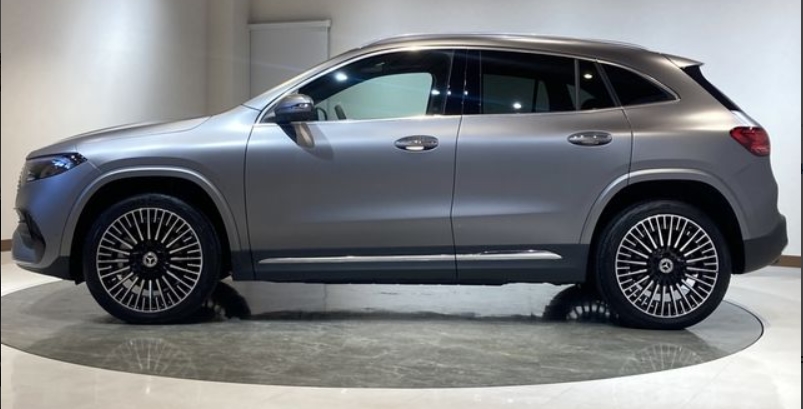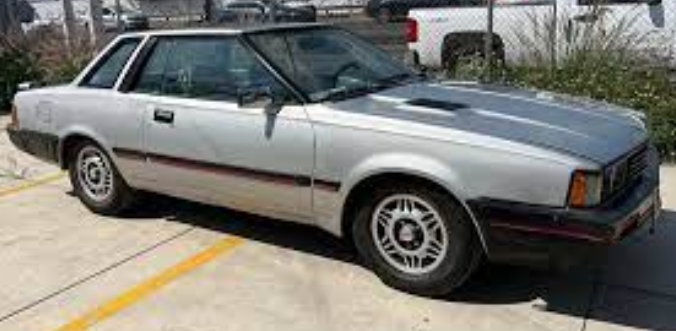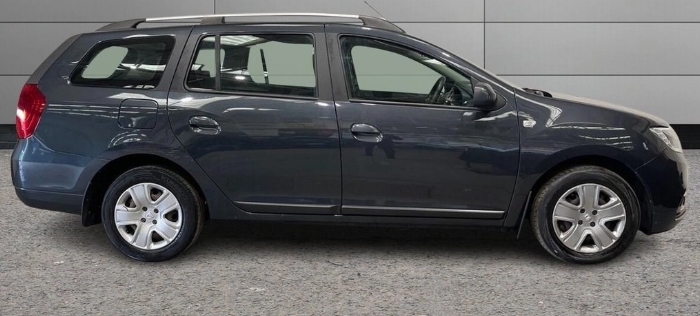Electrifying the Executive: Tracing the Evolution of Mercedes-Benz’s EQA, EQB, and EQC
Mercedes-Benz, a brand synonymous with luxury, engineering prowess, and a rich automotive heritage, has embarked on a decisive journey into the electric future. While the iconic “S-Class” and “C-Class” names have long defined segments of the internal combustion engine (ICE) world, the advent of the EQ sub-brand signals a new era of electrified mobility. Among the vanguard of this electric revolution are the EQA, EQB, and EQC models, each carving out its own niche within the burgeoning electric SUV landscape. Understanding their evolution – from initial concepts to the diverse model ranges we see today – is crucial to appreciating Mercedes-Benz’s strategic approach to electrification.
The Genesis of EQ: A Vision for the Electric Future
Before delving into the specifics of the EQA, EQB, and EQC, it’s important to acknowledge the foundational vision behind the EQ brand. Introduced in 2016 with the Concept EQ, Mercedes-Benz laid out a clear roadmap for its electric offensive. This concept car, a precursor to the EQC, showcased a futuristic design, advanced battery technology, and a focus on seamless integration into a connected lifestyle. The EQ brand was not merely about offering electric powertrains; it was about defining a new generation of Mercedes-Benz vehicles – intelligent, intuitive, and environmentally conscious, without compromising on the brand’s core values of luxury and performance.
The EQC: The Pioneer of Electrified Luxury SUVs (2019 – Present)
The Mercedes-Benz EQC was the brand’s first dedicated all-electric production vehicle and served as the flagship model for the nascent EQ lineup. Launched in 2019, it was designed to compete directly with established electric luxury SUVs like the Tesla Model X and Jaguar I-Pace. The EQC aimed to bring the familiar Mercedes-Benz driving experience and interior opulence into the electric realm.
Years Produced: 2019 – Present
Models and Trim Levels:
The EQC was primarily offered in a dual-motor, all-wheel-drive configuration, emphasizing its performance capabilities. While specific trim levels could vary by market and evolve over the production run, the core offerings generally revolved around a single, highly equipped model with optional packages that allowed for further customization.
- EQC 400 4MATIC: This was the foundational model of the EQC. It featured two electric motors, one on the front axle and one on the rear, delivering a combined output that provided strong acceleration and confident all-wheel-drive traction. Standard equipment typically included a comprehensive suite of driver-assistance systems, advanced infotainment, premium interior materials, and LED lighting.
Over the years, Mercedes-Benz has enhanced the EQC through minor updates and software improvements, often referred to as “model year updates” or “facelifts” rather than distinct new trim levels. These updates have primarily focused on:
- Battery and Charging Enhancements: Incremental improvements in battery management systems and charging speeds have been introduced.
- Infotainment and Connectivity: Updates to the MBUX (Mercedes-Benz User Experience) infotainment system, including new features, improved voice control, and over-the-air (OTA) updates.
- Driver Assistance Systems: Refinements and additions to the already extensive suite of safety and driver assistance technologies.
- Aesthetic Tweaks: Subtle exterior and interior design revisions, such as updated grille designs, wheel options, and interior trim choices.
It’s important to note that the EQC’s global availability and specific trim configurations have been subject to regional variations. However, the EQC 400 4MATIC has remained the consistent powertrain and primary offering throughout its lifespan. The EQC has played a vital role in establishing Mercedes-Benz’s electric credentials, showcasing the brand’s ability to translate its luxury DNA into a compelling electric vehicle.
.
THIS could come in handy for your auto garage (and everywhere else!):

.
The EQB: The Electric Compact SUV with Versatility (2021 – Present)
Following the EQC, Mercedes-Benz introduced the EQB, a more compact and versatile electric SUV designed to appeal to a broader audience, particularly families and those seeking a practical yet premium electric option. The EQB is based on the GLB platform and notably offers an optional third row of seats, a rarity in its segment.
Years Produced: 2021 – Present
Models and Trim Levels:
The EQB’s model strategy has been more diverse than the EQC’s, offering different powertrain configurations and varying levels of performance and equipment.
- EQB 250+: This front-wheel-drive model typically focuses on maximizing range and efficiency. It offers a more accessible entry point into the EQB lineup.
- EQB 300 4MATIC: This model features a dual-motor, all-wheel-drive system, providing a balance of performance and traction. It generally offers a step up in power compared to the EQB 250+.
- EQB 350 4MATIC: Positioned as the performance-oriented variant, the EQB 350 4MATIC boasts the most powerful dual-motor setup, delivering quicker acceleration.
Trim Levels and Packages (Commonly Offered):
Similar to the EQC, the EQB’s specific trim levels are often defined by optional packages that build upon a base configuration. These packages allow customers to tailor the vehicle to their needs and preferences. Common package themes include:
- Premium Package: Typically includes upgrades to seating (e.g., power-adjustable, heated), enhanced interior lighting, and potentially a premium sound system.
- Advanced Package: Often adds more advanced driver assistance features, a panoramic sunroof, and improved connectivity options.
- Technology Package: Focuses on infotainment enhancements, such as augmented reality navigation, larger displays, or wireless charging systems.
- AMG Line (Exterior and Interior): For those seeking a sportier aesthetic, AMG Line packages introduce distinct exterior styling elements (e.g., sportier bumpers, wheels) and interior accents (e.g., sport seats, specific steering wheel).
The EQB’s ability to seat up to seven occupants in its optional configuration makes it a unique proposition in the electric SUV market, catering to families who might otherwise be limited to larger, more expensive EVs. Its introduction broadened Mercedes-Benz’s EQ portfolio, making electric mobility more accessible and adaptable.
The EQA: The Entry-Level Electric Compact SUV (2021 – Present)
The Mercedes-Benz EQA is the smallest and most affordable model in the EQ SUV family, serving as the electric counterpart to the GLA. It’s designed for urban dwellers and those seeking a stylish, compact electric vehicle with the premium feel and technology expected from Mercedes-Benz.
Years Produced: 2021 – Present
Models and Trim Levels:
The EQA’s model strategy, like the EQB’s, has offered both front-wheel-drive and all-wheel-drive options, with varying power outputs.
- EQA 250: This is the entry-level, front-wheel-drive variant, prioritizing efficiency and range for everyday commuting.
- EQA 300 4MATIC: This model introduces a dual-motor, all-wheel-drive system, offering improved performance and traction.
- EQA 350 4MATIC: The most powerful variant, the EQA 350 4MATIC provides the sportiest acceleration and all-wheel-drive capabilities.
Trim Levels and Packages (Commonly Offered):
The EQA’s trim structure often mirrors that of the EQB, focusing on optional packages that enhance comfort, technology, and aesthetics.
- Electric Art Line: This package typically offers a more contemporary and stylish interior with specific upholstery and trim elements.
- AMG Line: Similar to the EQB, the AMG Line provides sportier exterior and interior styling cues, appealing to a more performance-oriented buyer.
- Advanced Package: Includes upgrades in driver assistance, connectivity, and convenience features.
- Premium Package: Often adds features like improved seating comfort, ambient lighting, and a premium sound system.
The EQA’s success lies in its ability to offer a premium electric SUV experience in a compact and accessible package. It democratizes the EQ brand, making it more attainable for a wider range of customers who value technology, design, and electric mobility.
Evolutionary Trends Across EQA, EQB, and EQC:
Looking at the evolution of these three models reveals several overarching trends in Mercedes-Benz’s electric strategy:
- Platform Diversification: While the EQC is built on a dedicated electric platform, the EQB and EQA are adapted from existing ICE platforms (GLB and GLA, respectively). This approach allowed Mercedes-Benz to quickly expand its EQ SUV offerings, leveraging existing manufacturing infrastructure and design language. However, future EQ models are increasingly being developed on dedicated electric platforms (like EVA2 and MB.EQ), promising even greater integration of electric powertrains and battery technology.
- Powertrain Range: Mercedes-Benz has consistently offered a spectrum of powertrain options within both the EQB and EQA, catering to different priorities of range, performance, and cost. The EQC, initially, was more focused on a single, potent dual-motor configuration.
- Technological Advancement: Across all three models, there’s a consistent progression in MBUX infotainment, driver assistance systems, and charging capabilities. Over-the-air updates play a crucial role in keeping these vehicles current.
- Design Language: The EQ design language, characterized by its smooth surfaces, aerodynamic lines, and distinctive grille designs (often a black panel), has been consistently applied across the EQA, EQB, and EQC, creating a recognizable and cohesive family identity.
- Focus on Customer Choice: The widespread availability of optional packages for the EQB and EQA demonstrates Mercedes-Benz’s commitment to allowing customers to personalize their vehicles, a key aspect of the luxury market.
- Global Market Adaptation: The specific model names, trim levels, and feature sets can vary significantly between regions due to differing market demands, regulatory requirements, and consumer preferences.
The Future of Mercedes-Benz Electric SUVs:
The EQA, EQB, and EQC represent crucial stepping stones in Mercedes-Benz’s ambitious electrification journey. As the company continues to roll out its dedicated electric platforms and battery technology, we can expect future iterations of these models (or their successors) to offer even greater range, faster charging, more advanced autonomous driving features, and a deeper integration of sustainable materials. The evolution of these three models is not just about the introduction of new cars; it’s a testament to Mercedes-Benz’s commitment to shaping the future of premium electric mobility, one electrifying SUV at a time. Their journey from the pioneering EQC to the versatile EQB and accessible EQA showcases a strategic and comprehensive approach to electrifying a brand steeped in tradition, ensuring that the “three-pointed star” shines brightly in the electric age.







